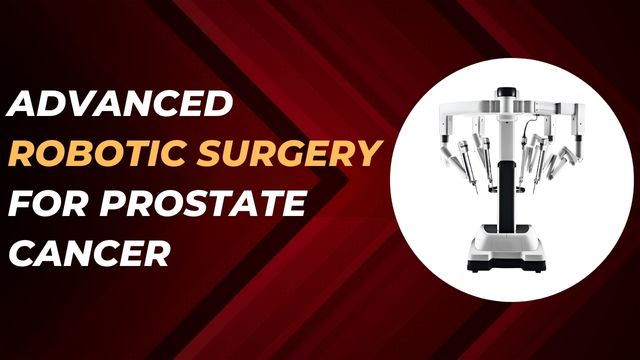Advanced Robotic Surgery for Prostate Cancer
December 12, 2023
In the world of medicine at Sohana Hospital, high-tech Robotic Surgery is helping treat prostate cancer. Our star is the Da Vinci Surgical System – with robot arms and 3D vision. This robot works hand-in-hand with our surgeons, making their moves precise. Advanced robotic surgery for prostate cancer typically involves the use of robotic systems, such as the Da Vinci Surgical System, to perform a procedure known as robotic prostatectomy.
Robotic Surgery for Prostate Cancer is a minimally invasive surgical procedure, requiring only small incisions. This is in contrast to traditional open surgery, which involves a larger incision. Advanced robotic systems enable surgeons to perform nerve-sparing techniques more effectively. This is crucial for preserving erectile function and urinary continence, improving quality of life post-surgery. Robotic surgery can be utilized for different stages of prostate cancer, providing a tailored approach to each patient's unique condition.
Prostate cancer in its early stages often doesn't cause noticeable symptoms. However, as the cancer progresses, some men may experience:
1. Urinary Changes: Changes in urinary habits, such as increased frequency, urgency, difficulty starting or stopping urination, or a weak or interrupted urine flow.
2. Blood in Urine or Semen: Presence of blood in urine (hematuria) or semen can be a symptom, though it's important to note that there are various potential causes for these symptoms aside from prostate cancer.
3. Erectile Dysfunction: Difficulty in achieving or maintaining an erection may occur, but it can also be associated with various other conditions.
4. Pain or Discomfort: Pain or discomfort in the pelvic area, lower back, hips, or thighs, especially if the cancer has spread to nearby tissues or bones.
5. Bone Pain: Advanced prostate cancer might lead to bone pain, particularly in the spine, hips, or pelvis, which could be a sign of the cancer spreading (metastasis).
It's crucial to remember that these symptoms can also be caused by conditions other than prostate cancer, such as benign prostatic hyperplasia (BPH) or infections. Regular check-ups, including prostate-specific antigen (PSA) blood tests and digital rectal exams, are essential for early detection. If you experience any of these symptoms or have concerns about your prostate health, consult with a healthcare professional for proper evaluation and guidance.
For men undergoing robotic surgery for prostate cancer, there are several notable benefits:
1. Minimally Invasive: Robotic surgery involves smaller incisions, leading to less trauma to surrounding tissues and a generally quicker recovery compared to traditional open surgeries.
2. Reduced Pain and Discomfort: Smaller incisions and enhanced precision often result in less postoperative pain, contributing to a more comfortable recovery experience for men.
3. Quicker Recovery Time: Patients undergoing robotic prostatectomy often experience a faster recovery, allowing them to return to their regular activities sooner than with traditional open surgery.
4. Shorter Hospital Stay: The minimally invasive nature of robotic surgery typically leads to shorter hospital stays, promoting a faster transition to recovery at home.
5. Improved Urinary Continence: Robotic systems enable surgeons to employ precise techniques for nerve-sparing procedures, potentially improving postoperative urinary continence outcomes.
6. Preservation of Erectile Function: The precision afforded by robotic surgery supports nerve-sparing approaches, which may enhance the preservation of erectile function compared to traditional open surgeries.
7. Reduced Blood Loss: Smaller incisions and enhanced visualization contribute to reduced blood loss during robotic prostatectomy, minimizing the need for blood transfusions.
8. Lower Infection Risk: Minimally invasive procedures generally carry a lower risk of infection compared to open surgeries, contributing to better overall postoperative outcomes.
9. Improved Cosmetic Results: The smaller incisions used in robotic surgery result in minimal scarring, offering improved cosmetic outcomes compared to larger incisions associated with open surgeries.
10. Enhanced Precision: Robotic systems provide surgeons with advanced tools and 3D visualization, enabling precise manipulation of robotic arms and improved navigation during the procedure.
It's crucial for individuals considering Robotic Surgery for Prostate Cancer to consult with their healthcare team to understand the specific benefits and risks based on their unique medical history and circumstances. The field of robotic surgery is continuously evolving. Ongoing technological advancements may bring further improvements, expanding the capabilities and outcomes of robotic procedures for prostate cancer.
